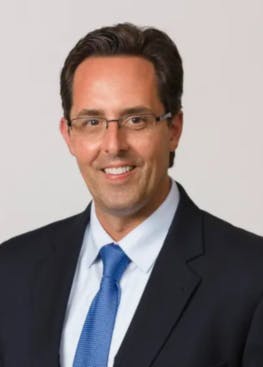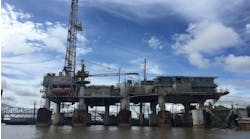OTC 2025: The future of offshore energy is here—and it’s taking shape at OTC
By Jonathan Landes, President, Subsea at TechnipFMC, and NOIA Chairman 2024-2025
The Offshore Technology Conference (OTC) has always been a showcase of offshore energy innovation, but as we gather in Houston for OTC 2025, it’s clear that we are witnessing an unprecedented transformation. Companies here today aren’t talking only about oil and gas—they’re engineering the future of how we power the world.
Offshore energy is defined by its ability to solve complex challenges in one of the most unique environments on Earth. That capability is now opening doors across multiple sectors, creating a more diverse and integrated offshore energy ecosystem.
Oil and gas remain a foundation of global energy security, providing reliable and affordable energy while continuing to drive technological breakthroughs. But alongside traditional offshore development, we are now seeing rapid advancements in floating offshore wind, which will allow wind energy to expand into deeper waters, and carbon capture and storage (CCS), which will be critical for reducing industrial emissions at scale.
TechnipFMC, for example, has spent decades developing subsea technologies that optimize offshore oil and gas production. Through our role as energy architect, we are now applying that expertise to new areas. Last year alone, we announced multiple first-of-a-kind projects, including a system for CO2 processing on the seabed and an all-electric system for the transportation and permanent storage of industrial emissions offshore. TechnipFMC, like this industry, has capabilities and expertise that transcend traditional silos.
At OTC, we see this transformation happening across the board. The companies here are leveraging decades of offshore experience to build the next generation of energy solutions—solutions that will deliver affordable, reliable energy while reducing environmental impacts.
While many regions are advancing offshore energy projects, few places offer the same potential as the Gulf of America (Gulf). The Gulf has long been one of the world’s most prolific offshore oil and gas basins. Here, technology leadership has always been embraced to unlock the next wave of opportunity—most recently with the adoption of 20,000 psi production systems in the Paleogene, where TechnipFMC is taking the lead—and it continues to evolve as a true energy hub, spanning traditional and emerging energy development.
The offshore oil and gas industry in the Gulf continues to set global benchmarks for efficiency and environmental performance. The deepwater Gulf produces some of the lowest carbon intensity barrels of oil in the world, thanks to advanced technologies, a remarkable workforce, and world-class infrastructure. Maintaining a strong offshore oil and gas sector is not just an economic priority—it’s an energy security necessity.
Offshore wind projects have gained traction over the last few years, with the first major US-built offshore wind substation now completed and a new generation of specialized vessels under construction. Meanwhile, companies are actively exploring offshore CCS opportunities, ready to position the US as a global leader in this advanced technology.
And deep-sea mining is on the horizon, with potential to strengthen US supply chains for the critical minerals needed for renewable energy and electrical power projects.
The companies at OTC are not just participating in an industry—they are shaping the future of energy. And as we navigate this transformation, organizations like the National Ocean Industries Association (NOIA) play a critical role in ensuring that the US offshore industry remains competitive, innovative, and resilient.
As Chair of NOIA, I see firsthand how our members—spanning oil and gas, offshore wind, CCS, and marine technology— work together to advocate for policies that support responsible offshore development.
Through NOIA, companies have a platform to collaborate, share expertise, and push for policies that enable long-term growth across all offshore energy sectors. Whether it’s advancing permitting reform for offshore wind, securing regulatory clarity for CCS, or ensuring continued investment in offshore oil and gas, NOIA is at the forefront of these critical conversations.
The story of offshore energy has always been one of innovation and resilience. We operate in one of the most challenging environments on the planet, and we continue to engineer the solutions that make it happen safely and responsibly. The companies at OTC this week are proof that our industry is not just keeping pace with change—it is setting the pace.
From deepwater oil and gas production to floating wind farms, from carbon storage to critical mineral extraction, from hydrogen to aquaculture, offshore energy is evolving into a broader, more integrated ecosystem. This is not just good news for our industry—it’s good news for society. A strong offshore energy sector means continued leadership in global energy innovation, reliable power, and economic prosperity.





